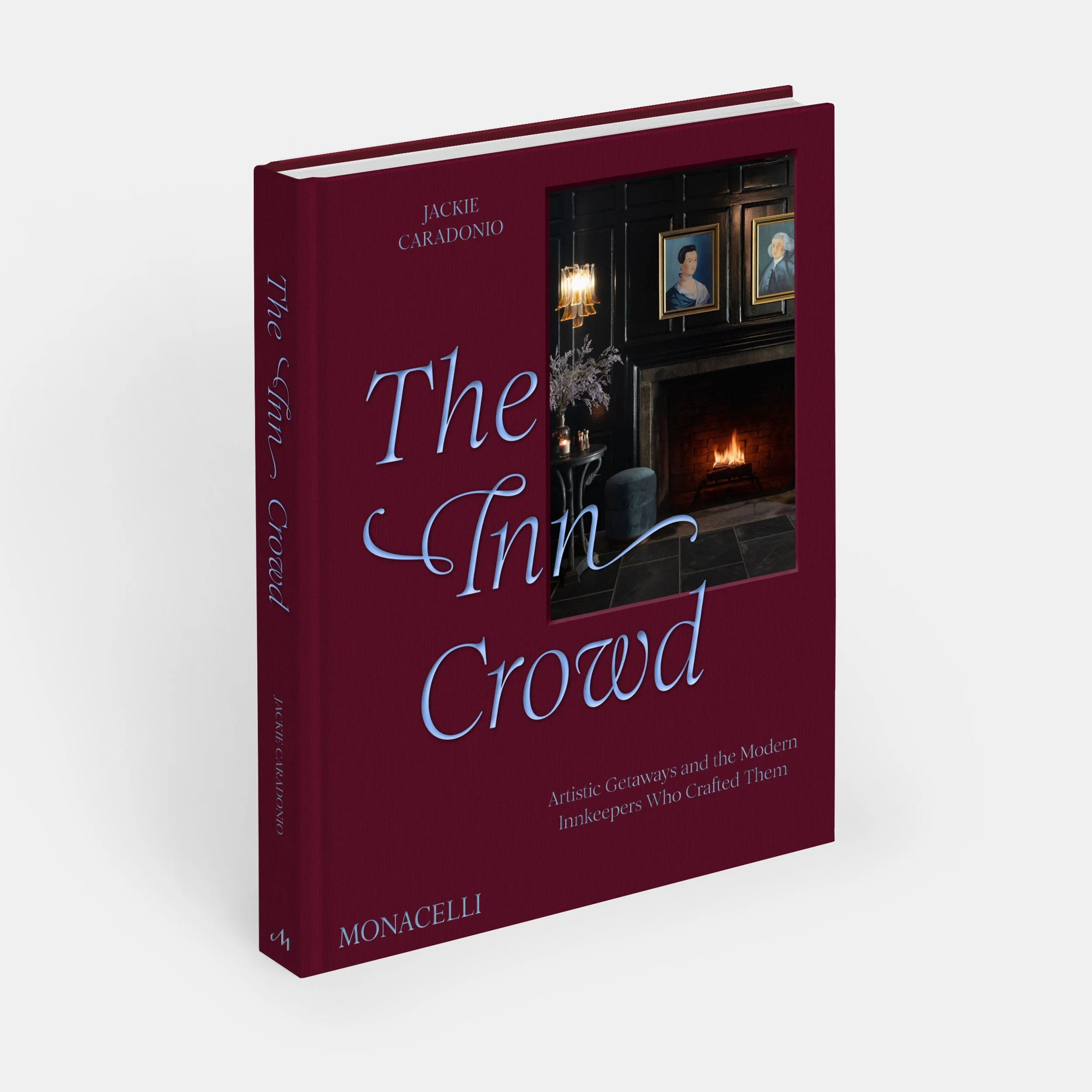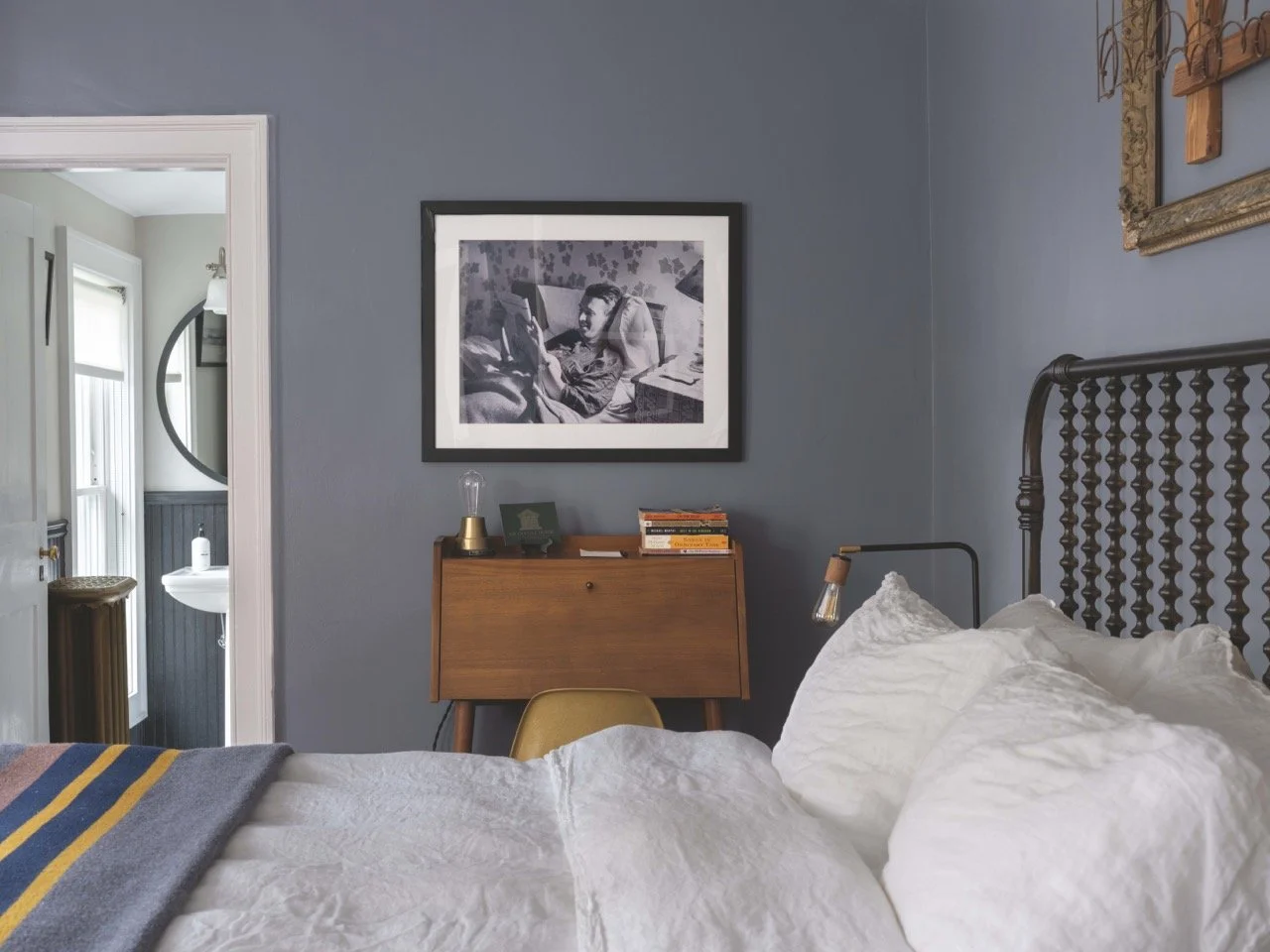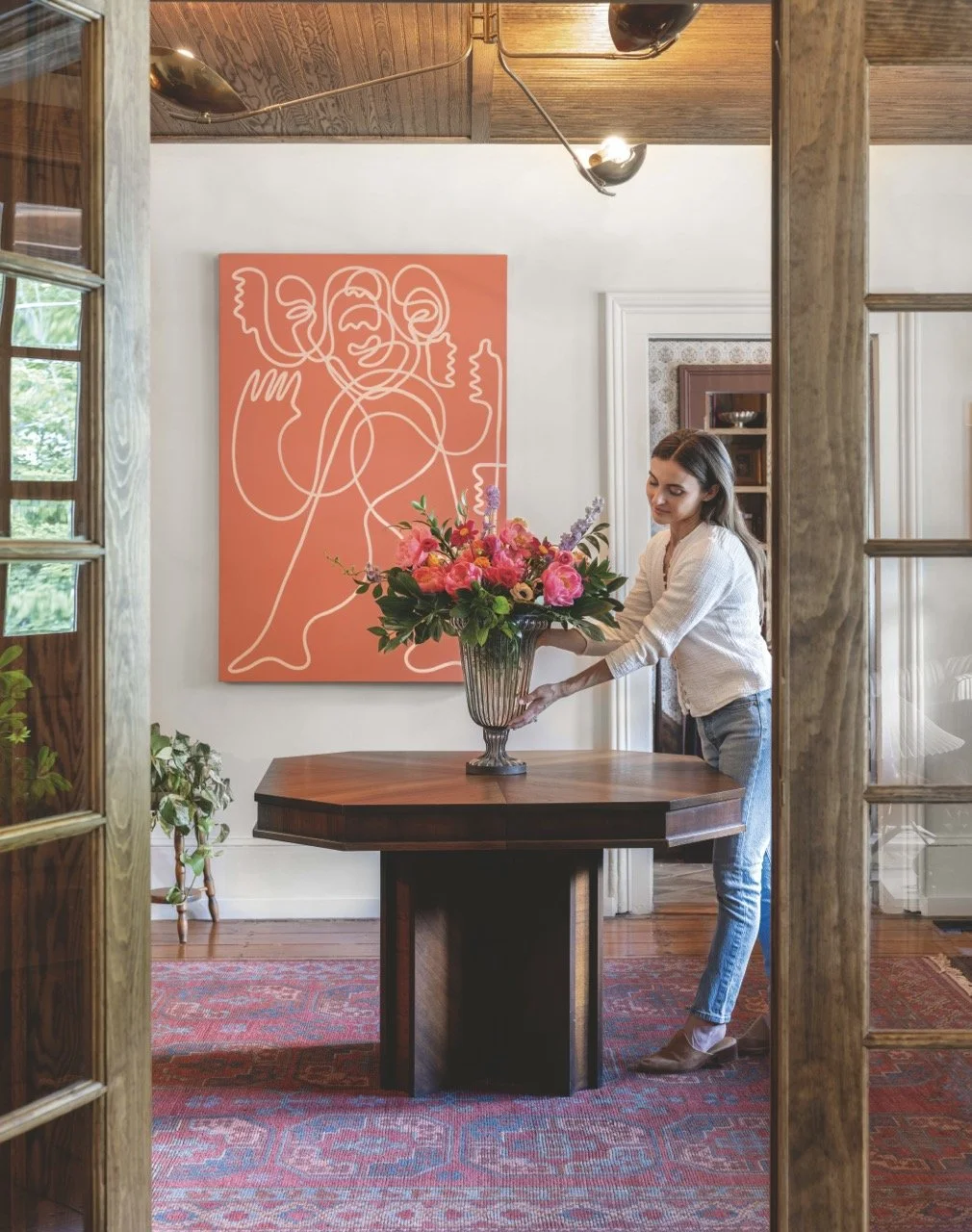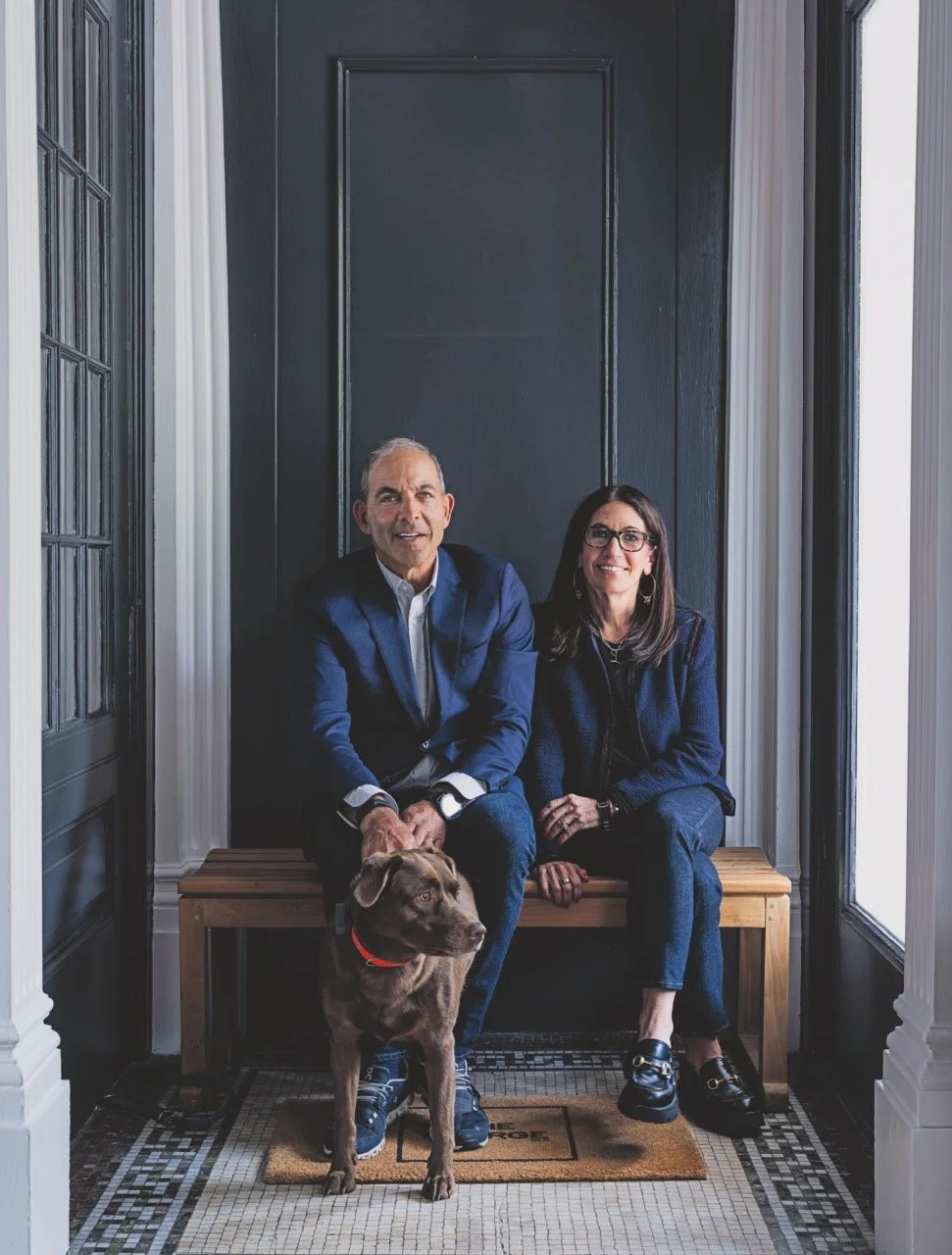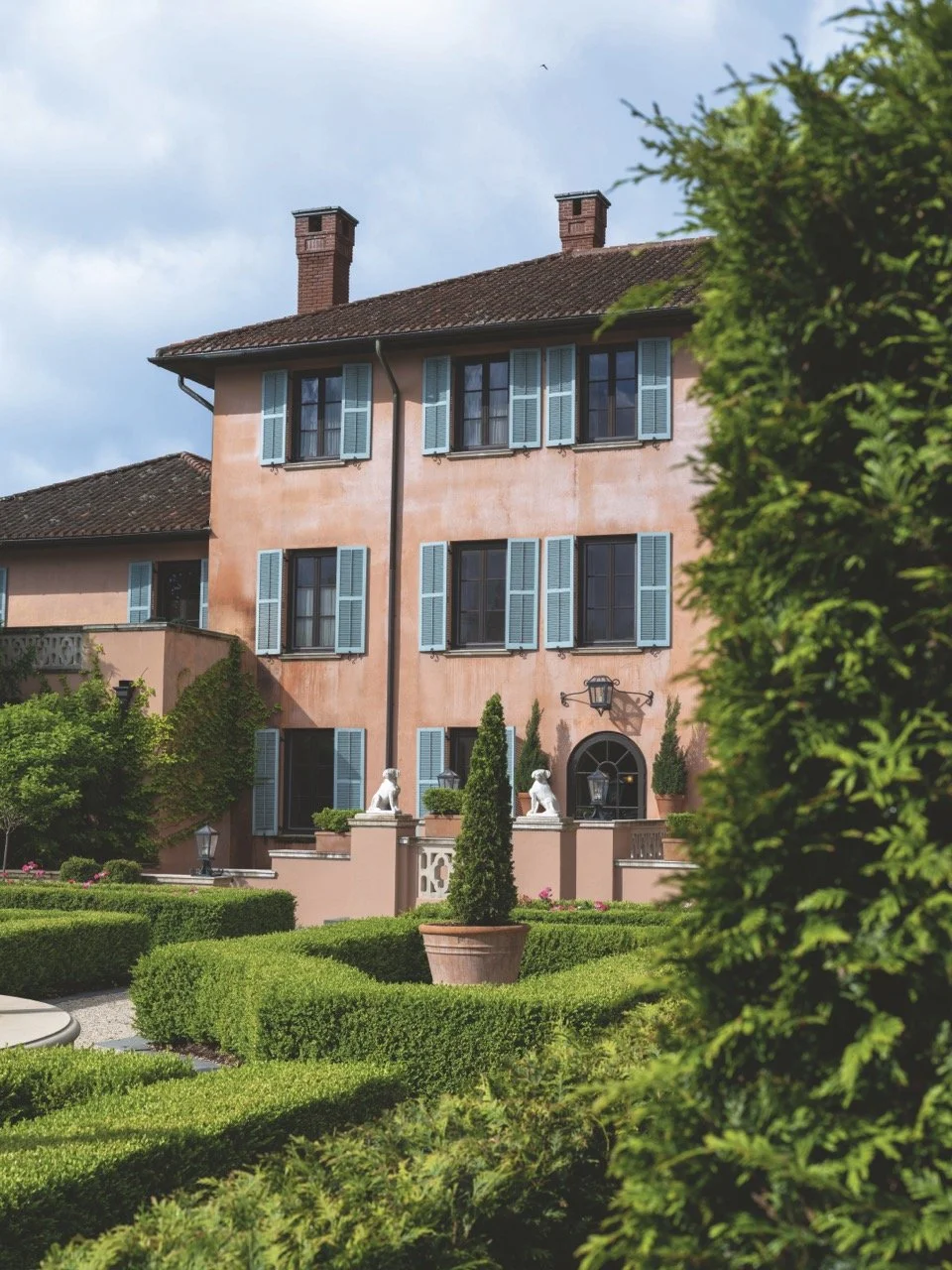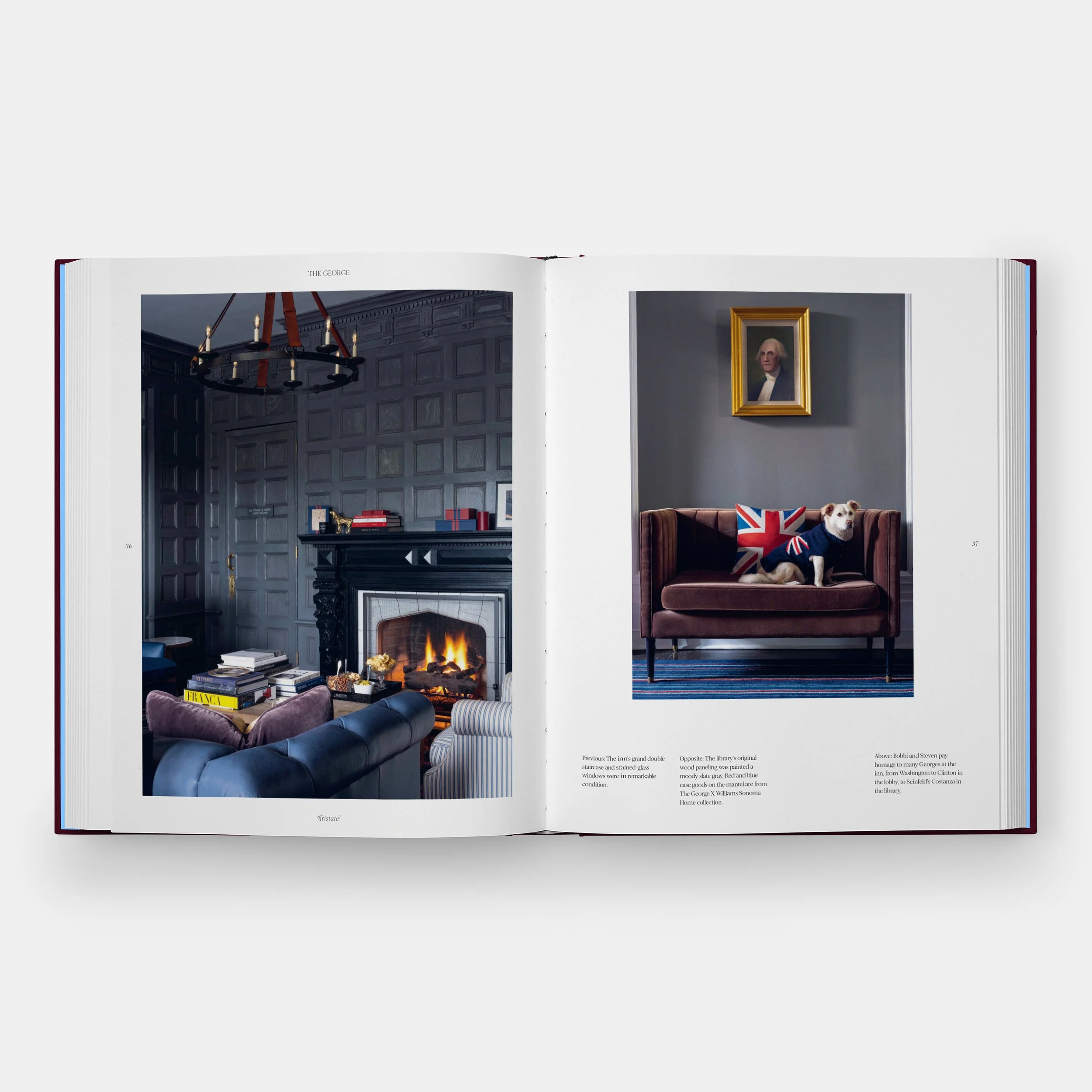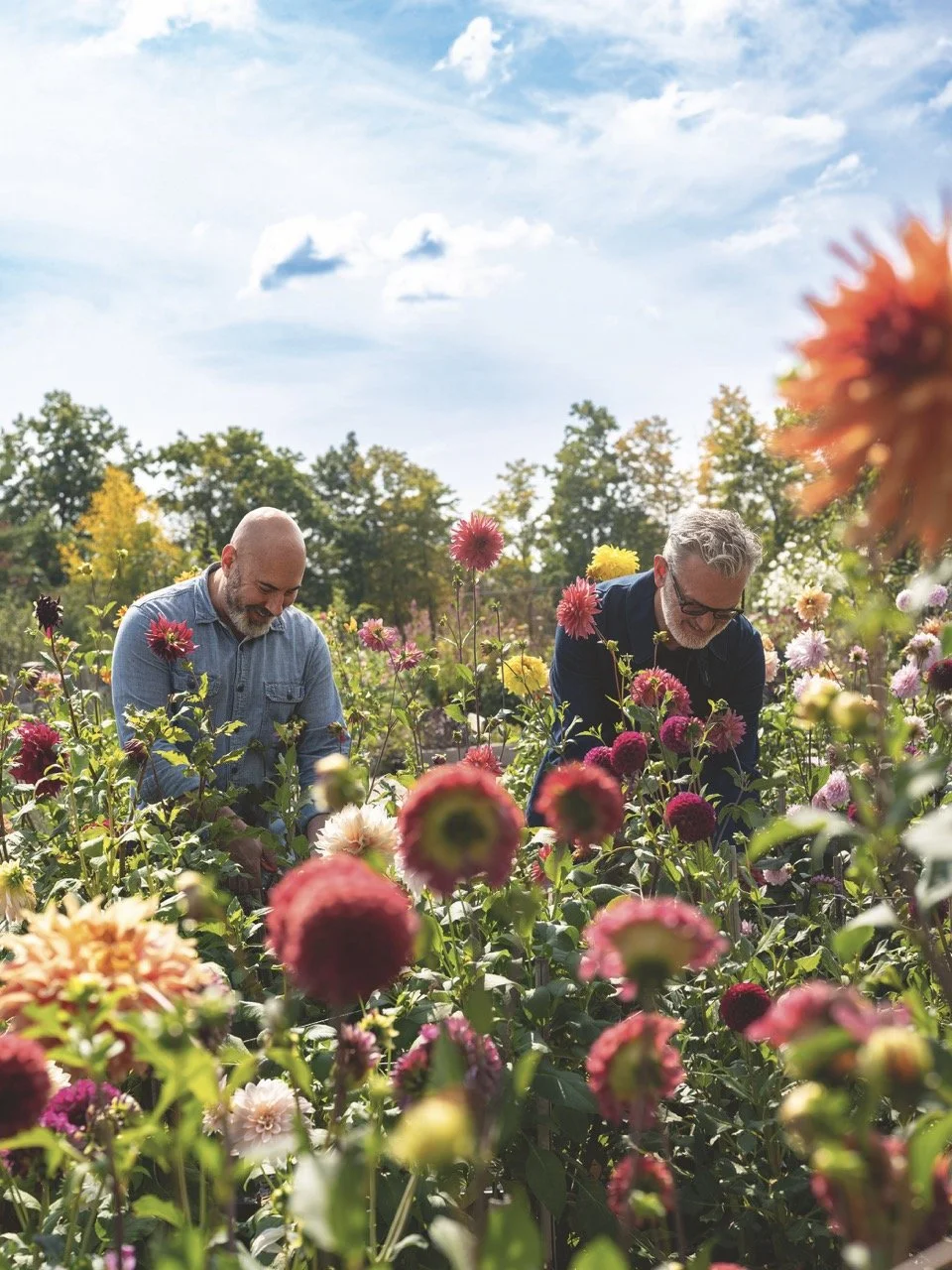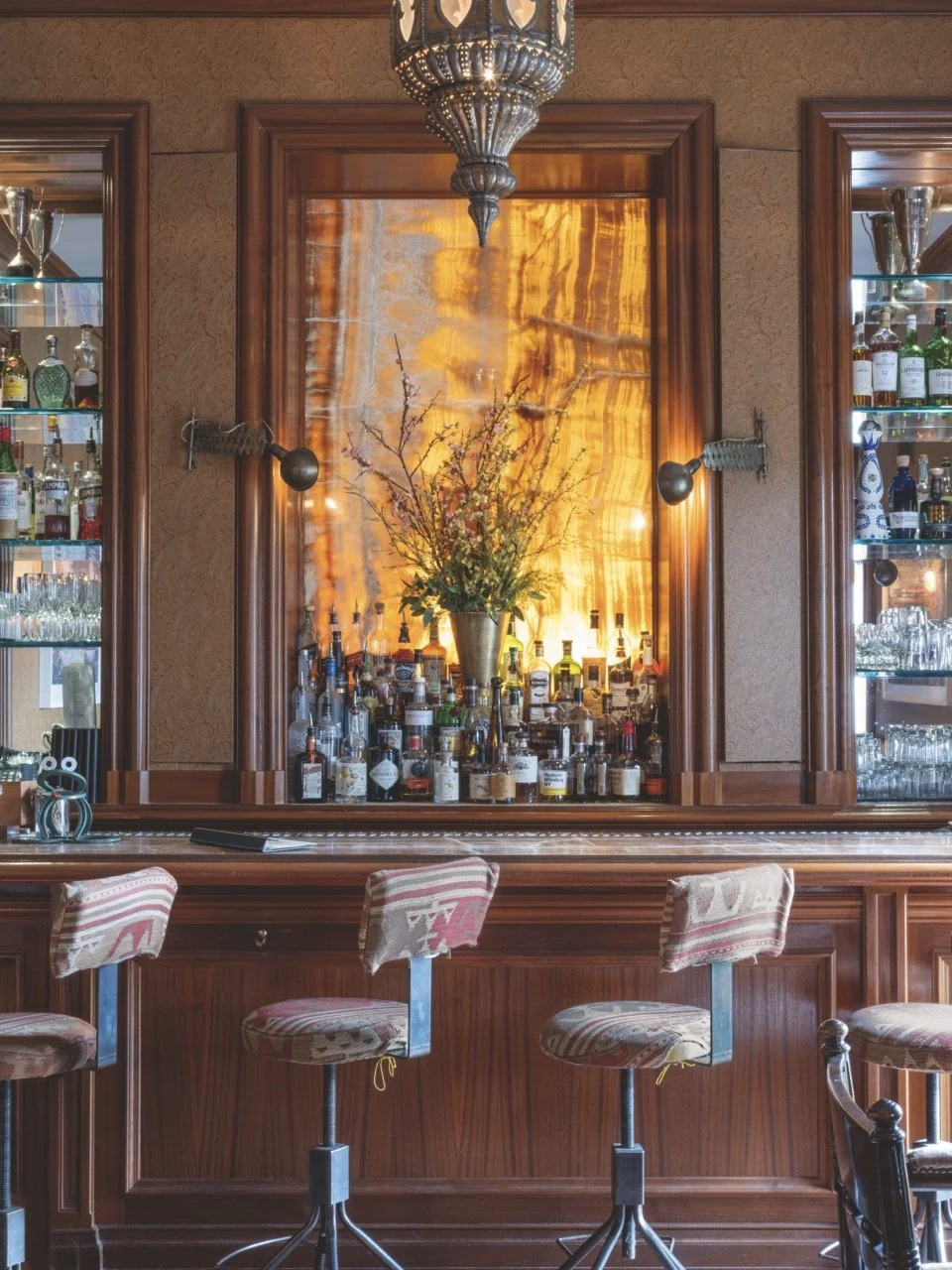Checking In with Jackie Caradonio: Inside Her New Book, The Inn Crowd
Photo by Jackie Caradonio
If you’ve ever daydreamed about checking into a perfectly designed inn and never leaving, The Inn Crowd is your next must-read. Written by design journalist Jackie Caradonio, the book captures the charm and character of stays that blur the line between travel and art form. Here, Jackie shares what drew her to the world of inns, how she found her favorite destinations, and what defines truly thoughtful hospitality.
Photo by Jackie Caradonio
Congratulations on your new book! The concept is absolutely brilliant. Can you share a bit about The Inn Crowd and what readers can expect?
The Inn Crowd is about a truly remarkable group of people. They’ve left their careers, retired, or pursued side hustles all in the name of creating exquisite, one-of-a-kind inns. They are interior designers and architects, opera singers and artists. They are restaurateurs and entrepreneurs, even software engineers! And all of them are driven by the unrestrained desire to build something beautiful—not only for themselves, but for all who enter their doors.
What I hope readers will get out of this book is an appreciation for this group’s incredible achievements. Their inns are gorgeous—every page of the book is filled with eye candy—but their stories are just as beautiful. I walked away from every visit and every interview feeling inspired by (and perhaps a little bit envious of) their creativity, ingenuity, and passion.
I called this book The Inn Crowd because, yes, puns are fun, but also because these innkeepers are truly magnificent human beings—way cooler and more stylish than most of us could ever hope to be, and yet so warm and hospitable at the same time.
How did the idea for the book come to you, and what was the process like from concept to publication?
I had played with this idea for years, and as a magazine editor, even produced a few articles about this exact theme. At some point during COVID, after being laid off like everyone else in media, I thought to myself that I’d really like to write and photograph a coffee table book. Naturally, this concept came back to me.
Photo by Jackie Caradonio
The process started as all books do—with a proposal. To complete it, I needed to find someone who would trust me enough to let me come photograph their inn, with no promise of it ever amounting to anything. (More on that below.) Once I had a sample chapter and a list of prospective inns, I wrote an introduction that was truly from the heart. In a nutshell, it said: These people inspired me to pursue my own dream of making this book, which I hope will inspire countless others to pursue their dreams. Monacelli was the first publisher I approached, and they greenlit the book quite quickly.
I was given a year to write and photograph the book, and though it seemed like plenty of time, it certainly came down to the wire! My editor and I even pushed the deadline back by a month so that we could include Lost Fox Inn, which opened last fall—and ended up being my cover! My magazine background came in handy when it came to organizing everything (I have the spreadsheet to prove it!), but looking back, it felt as if this book just flowed right out of me. The inns were so easy to photograph because they are all absolutely gorgeous, and every chapter was a joy to write because I was so in love with each innkeeper’s story.
Then came time for the book design, which was an incredible experience in its own right. The graphic design team at Cantina really took my directive—more is more!—to heart. They chose vibrant colors and fonts to really bring the spirit of each inn to life. I don’t want to misrepresent just how much work it was, but making this book really was a dream, and I have never enjoyed a project more.
In your expert opinion, what distinguishes an inn from a hotel?
Photo by Jackie Caradonio
Oh, that’s certainly up for debate. In fact, Bobbi Brown, who wrote the foreword and is featured in Chapter 2 for her Montclair, New Jersey, property, The George, doesn’t even like to use the word ‘inn.’ I think that comes from a longstanding notion that inns can be a bit stuffy and basic. But that’s exactly why I wanted to call these people The Inn Crowd—because they are breathing new life into an age-old concept.
In my mind, a hotel is a bigger operation, and it often can feel a bit impersonal. In my Introduction to the book, I talk about how I grew up in hotels because my father was a GM, and as I grew older, I found that I much preferred smaller, more personalized hotels to the ones I spent my childhood in (as nice as they were). The feeling that everything you see, touch, smell, taste was created just for this moment, for this place, for me, is what makes an inn. It’s not cookie-cutter; it hasn’t been standardized or replicated. It’s one-of-a-kind. That doesn’t mean it’s perfect, but rather perfectly imperfect. And to me, anyway, that, along with an innkeeper, is what makes an inn.
You chose to focus solely on inns in the Northeast for this book—what inspired that decision?
History made that decision for me. The great American inn was born right here in the Northeast, in 1742, with the Kelley House Hotel, in what is today Edgartown, Massachusetts. And the oldest continuously operating inn is the Beekman Arms, an upstate New York mainstay that has hosted Vanderbilts, Roosevelts, and American Revolutionary generals since opening its doors in 1766. While neither of these inns is in the book, they are a blueprint and a sort of raison d’être, without which The Inn Crowd would never exist.
Each inn featured feels like a true reflection of its innkeeper's vision. Were there any interiors that particularly surprised you—or challenged your expectations of what an inn could be?
Photo by Jackie Caradonio
It’s so true. They say dogs and owners often look alike; I feel it’s the same with The Inn Crowd. When you get to know the owners and their inns, you see that they really are built in the same image, and the inn that broke the mold or challenged my expectations did so in the image of its creator.
The Inns of Aurora in the Finger Lakes, New York, is owned by American Girl dolls founder Pleasant Rowland. She’s obviously a dynamo and a big thinker—she sold American Girl to Mattel in 1998 for $700 million—but she’s also a humble and genuine person who built her empire simply because she believed children deserved better dolls. Her Inns of Aurora is the same in that it’s so charming and quaint, located on the edge of serene Cayuga Lake—and yet it’s completely over-the-top because it’s not just one inn…it’s an entire town! Over many years, Rowland converted a collection of historic estates along Aurora’s main street into gorgeous guesthouses, filling them with her own art, antiques, and furniture that she amassed from her travels around the world. There is no one style across the inns either—some are traditional, others more contemporary—but all have been lovingly styled by Rowland. It’s so extra and yet so comforting and nurturing at the same time, just like Pleasant herself.
From historic restorations to bold, contemporary spaces, the design range in the book is incredible. How did you approach balancing that diversity visually and narratively?
Aesthetic diversity was very important to me. It was the reason that the final list of inns took more than a year to solidify. We even omitted a few inns to ensure that nothing would appear too similar. It was a bit of a jigsaw puzzle, especially when you add in the fact that the owners’ stories all had to be unique and special as well. There was a moment when I felt we could stand to add something a bit more traditional, precious even, so that’s when I called the Crone family at The Inn at Burklyn in Vermont. And then we really wanted to have a beach property, so that’s where Silver Sands Motel came in.
Photo by Jackie Caradonio
What was it like staying at Bobbi Brown’s inn—and how did it feel to have her write the foreword?
Bobbi was a little bit of a shot in the dark, but I feel like she and her husband, Steven, got my vision right away. Their property, The George, really filled an aesthetic gap in the book. They have a somewhat masculine style, and while their inn is a historic property, their renovation didn’t dwell on preservation quite as much as some of the other chapters, so there was this real vision and distinct perspective that made so much sense in the greater context.
I also loved Bobbi and Steve’s story of making the hotel, which happened right after Bobbi left Estee Lauder and was waiting out her non-compete before she could start her next venture, Jones Road Beauty. This project was almost like therapy for her—a creative distraction. And Bobbi and Steve have the most incredible banter, so interviewing them was hilarious. They finish each other’s sentences. They don’t always agree on everything, but they are so gracious with each other in how they agree to disagree. They are serious couple goals.
Did your perspective on hospitality or interior design evolve over the course of creating The Inn Crowd?
Photo by Jackie Caradonio
Absolutely—I began to appreciate the iterative process behind both design and hospitality. Neither of these things is ever “done.” There’s always something to work on, something new to add, a way to improve, or at least change up. I think that is so much part of what appeals to the innkeepers. There’s this comfort in knowing that you can continue to build and expand the dream, rather than close the chapter and move on. For someone like me, who has been very deadline-driven all my life, the open-endedness of that feels a bit scary. But when I sit with it long enough, I can see the appeal. There’s no on-to-the-next. No beginning, middle, or end. It’s almost meditative.
Do you see The Inn Crowd as the beginning of a larger series or concept—perhaps other regions or design styles?
Absolutely! We’re already talking about a West Coast edition!
What do you hope readers take away from this book—not just in terms of where to stay, but how to live?
Of course, there is the design inspo, but what I really want people to take from this book is what I got out of writing it—that it’s never too late to pursue a new goal or passion. That you don’t start a project as an expert, but you always finish a project as one. What I realized about so many of these innkeepers who have had incredible success is that they did not have a playbook. Most of them had no idea if it was even going to work. But they had a drive and a desire, and that was the secret to always making the next right decision. It feels like a metaphor for life: We don’t know how it’s all going to turn out, but we can’t let that stop us from taking risks and chasing what we want. The only assured outcome in life is that nothing will change if we don’t make the moves to change ourselves. But if we take the leap of faith…well, beautiful things are sure to follow.
Out of the twenty inns featured, do you have any personal favorites or recommendations you'd suggest to our readers?
Photo by Jackie Caradonio
It’s like picking a favorite child! They are all perfect in their own special ways; it really is impossible to choose, but the one that I always come back to as the ultimate ideal of what an inn should be is The Villa at Saugerties. Joe and Amanda are its creators—she’s an interior designer; he’s the chef behind the most incredible breakfasts—and they have really just completely given themselves over to their four-room inn. It’s like they are possessed in the most incredible way: They know their mission in life is to perfect the experience they offer. They were also integral to the making of this book because they allowed me to come photograph their inn and interview them even before I had a publisher greenlight the project. I knew they had to be in The Inn Crowd from day one.
Your career has taken you around the world. Could you share a few of your favorite travel tips—those tried-and-true habits or hacks you always swear by?
I refuse to look disheveled on a plane. You will never catch me wearing workout clothes or ugly trainers in an airport—even if everyone else is doing it. Whether I’m flying first-class or not, it’s important to me that I look my best. That said, it’s vital that I don’t have to take my shoes off when I go through security, so I’ll usually wear a pair of stylish sneakers from Common Projects or Loewe. (And for the record, I would never ever go sockless on a flight. It’s just wrong.)
I am also not one of those people who only carry on. I usually have a tripod with me, so most often, I have no choice but to check a bag. But I also find it very freeing not to have to fight for overhead bin space. For me, it’s worth the risk of lost luggage to feel a bit more dignified when I’m boarding a plane.
I always travel with powdered hydration, like Cure or Liquid IV. Anytime I feel the slightest bit tired or worn down, these little powders pep me right up. I also travel with my own teabags. I’m not a coffee drinker, but I find the ceremony of drinking tea truly grounds me—whether it’s to wake me up in the morning or help me fall asleep at night. So few places (especially in the U.S.) offer quality tea, so it’s imperative I bring my Harney & Sons with me everywhere I go. If my hotel room doesn’t have a kettle, I request one. There’s almost nothing in this world that brings me more joy than drinking tea in a hotel bed.

